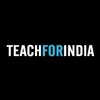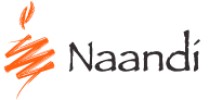Filter interviews by
BWR Public Relations Interview Questions and Answers
Be the first one to contribute and help others!
Interview questions from similar companies

I applied via Company Website and was interviewed before Jun 2020. There were 3 interview rounds.
Interview Questionnaire
3 Questions
- Q1. How do you Handle Stress and Pressure?
- Q2. What is your Weakness and Strength?
- Q3. Why do you want to Leave your job?
Interview Preparation Tips

Assistant Manager Interview Questions & Answers
Dr. Reddy's Foundationposted on 5 Jul 2021
I applied via LinkedIn and was interviewed in Jan 2021. There were 3 interview rounds.
Interview Questionnaire
1 Question
- Q1. About your work profile
Interview Preparation Tips

(4 Questions)
- Q1. Tell me about yourself
- Q2. Why do you want to join
- Q3. What value can you add
- Ans.
I can bring a unique perspective and skill set to the team, as well as a strong work ethic and dedication to achieving goals.
Expertise in data analysis and visualization
Experience in project management and team leadership
Strong communication and interpersonal skills
Ability to think creatively and outside the box
Proven track record of meeting and exceeding targets
Examples: Developed a new data analysis tool that increas...
- Q4. Strengths and weaknesses
Interview Preparation Tips

I applied via Company Website and was interviewed before Feb 2023. There were 3 interview rounds.
(1 Question)
- Q1. Why TFi? Why social impact?
Session plans for your role
(2 Questions)
- Q1. How would you behave in different situations
- Q2. How would your friends describe you?
Interview Preparation Tips

LR and finance related questions
(1 Question)
- Q1. Liquidity ratios

I applied via Recruitment Consulltant and was interviewed before Aug 2021. There were 2 interview rounds.

(1 Question)
- Q1. What is your work experience
Interview Preparation Tips

I appeared for an interview in Feb 2017.
Interview Preparation Tips
Experience: A vast topic discussion with a conclusion that its not important.
Tips: Just have a clear idea and think twice before you speak.
Duration: 10 minutes
Round: HR Interview
Experience: Honestly the interviewer didnt look in a good mood. Her first reaction was that she does not want to look at my resume for no reason. And then she started asking me news which she might have not heard from any place, no newspaper, no tv channels nothing.
Tips: Be confident, be fierce. Sometimes the interviewer knows less than what you know. Stick to your point and dont fumble.
College Name: SRM University

Business Development and Marketing Interview Questions & Answers
AIESECposted on 24 Aug 2017
I appeared for an interview in Feb 2017.
Interview Questionnaire
1 Question
- Q1. My life so far, my motivation, future goals and contribution expected towards AIESEC.
Interview Preparation Tips
Experience: I had to fill up a form and give a rating scale test based on leadership and decision making.
Tips: Be honest with your answers.
Round: Guesstimate Interview
Experience: I was asked several questions which revolved around my career goals.
Tips: Be honest, humble and confident! :)
College Name: J.D.Birla Institute

I appeared for an interview in Jan 2017.
Interview Questionnaire
1 Question
- Q1. Discussion of job profile and situational questions
Interview Preparation Tips
Experience: Panel Discussion
Duration: 15 minutes
Round: HR Interview
Experience: Made me sell a pen
College Name: LSR

I appeared for an interview in May 2017.
Interview Questionnaire
1 Question
- Q1. What will i gain from interning at Aiesec?
- Ans.
Interning at Aiesec will provide you with valuable skills, global exposure, networking opportunities, and personal growth.
Gain valuable skills through hands-on experience in a professional setting
Develop a global mindset by working with diverse teams and cultures
Build a strong network of contacts in various industries
Enhance personal growth through challenging projects and mentorship
Opportunity to work on impactful pro
Interview Preparation Tips
Experience: My application was just shortlisted and i was called for an interview.
Tips: Not any that i can think of
Round: HR Interview
Experience: I was asked about as to what i was thinking of gaining from interning at AIESEC and what do i look forward to doing.
Tips: Speak your heart out and be as frank as you can atlest according to me.
College Name: JDBI BBA
Tell us how to improve this page.
Interview Questions for Popular Designations
Interview Questions from Similar Companies
BWR Public Relations Reviews and Ratings
based on 2 reviews
Rating in categories
|
Senior Sales Executive
3
salaries
| ₹3 L/yr - ₹4 L/yr |

CARE

Magic Bus India Foundation

Dr. Reddy's Foundation

Labournet Services
- Home >
- Interviews >
- BWR Public Relations Interview Questions









